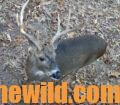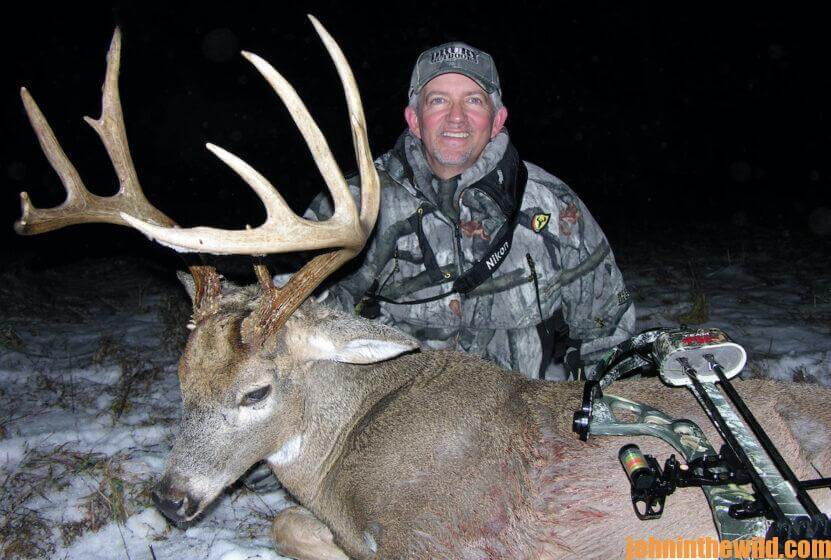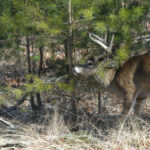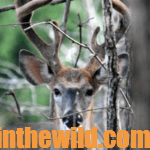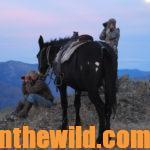Editor’s Note: Many states are now in their postrut times of deer season. Terry Drury of Drury Outdoors https://www.druryoutdoors.com/, along with his brother, Mark, are two of the most well-known and most-recognized deer hunters in the nation, due to their TV shows, videos and podcasts. One of the questions they’re often asked is, “How do you take a buck after the rut?” This week Terry will tell us how to hunt after the rut.
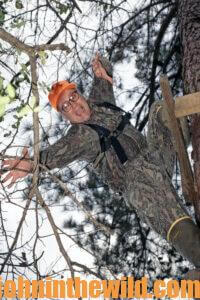 I had to completely change my style of deer hunting several years ago after the rut, because I fell as I was getting into my tree stand. I know the next question you’ll ask is, “Why weren’t you wearing a safety harness?” The answer is yes, I was. Let me explain. In November, the day prior to Missouri’s opening day to hunt deer with firearms, I was climbing into a tree and fell 17 feet. Although I had a safety harness on, I wasn’t connected to a safety line, as I was climbing into the tree. So, it was my fault that I didn’t have a safety line on the tree stand I was planning to sit in the day before rifle season.
I had to completely change my style of deer hunting several years ago after the rut, because I fell as I was getting into my tree stand. I know the next question you’ll ask is, “Why weren’t you wearing a safety harness?” The answer is yes, I was. Let me explain. In November, the day prior to Missouri’s opening day to hunt deer with firearms, I was climbing into a tree and fell 17 feet. Although I had a safety harness on, I wasn’t connected to a safety line, as I was climbing into the tree. So, it was my fault that I didn’t have a safety line on the tree stand I was planning to sit in the day before rifle season.
I hadn’t been to this tree stand in quite some time. Every summer we check all of the straps that hold our tree stands to trees to make sure the stands are secure. Many years, we’ll add additional ratchet straps on both the tops and the bottoms of the stands before deer season arrives to make sure the stands are secure. We check the cables on the stands too. On this day, the tree I planned to climb was a shaggy bark hickory, and the wood on those trees is really hard. This particular tree had a stress fracture, and one of my steps was right in the middle of that stress fracture. When I fell, I thought the step had broken, but one of my buddies went back to the stand after I fell. He found the step, and it was intact. But he noticed that the fracture in the trunk of the tree had rotted around the step. So, as I was transferring from the step into my tree stand, all my weight was on that one step, and the step popped-out of the fracture that had rotted in the tree.
I’ve climbed all my life – trees to hunt from, and I own a construction company – so, I’m climbing on top of everything all the time. I’ve always believed that if I ever fell, I’d be able to catch myself before I hit the ground. But when you fall, I’ve learned you fall quickly, and you don’t have time to think about what you can do, or what you can grab before you hit the ground. I’ve noticed that many times the people who fall climbing trees and from tree stands are not newbies. Often, they’re very-experienced hunters who are really confident about their abilities to climb safely. Because of their confidence, they may overlook a key ingredient to not falling from a tree stand – just like I overlooked not having a safety line attached to my harness before I went up the tree.
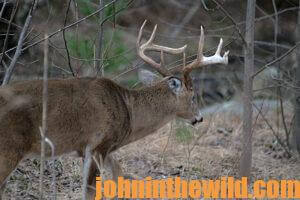
I probably had climbed thousands of trees without using a safety line in my hunting history. I was confident (probably overconfident) that not attaching myself to a safety line wasn’t a big deal until I hit the ground. Then I realized how truly important it was to make sure you had a safety line attached to your harness from the time you left the ground until you returned to the ground. I could have saved months of hurt, if I had remembered the value of a safety line and not gone up that tree without one. From now on, every tree stand set that I make will have a safety line on it for me or the hunters who hunt with me. I think everyone who hunts from a tree should hunt with a safety line attached to his or her safety harness before going up or down a tree.
My 17-foot fall resulted in five cracked ribs, a fractured T7 vertebra, a fractured ankle, a bruised lung, a damaged leg muscle and a concussion. Deer season came in, but I was banged-up. I knew I had to and needed to hunt through these injuries. For me, deer season was game day, and I had to play. While I was recuperating, I began to think about the modifications and changes I would have to make to hunt that season. The accident happened in November, and I took my first buck on December 2. The rut was over, but I had to hunt.
One of the things I’ve learned about hunting the postrut is that Mother Nature plays a major role when postrut bucks move. That year we didn’t have the colder temperatures that we’re accustomed to having in the Midwest, during November. Finally, in the early part of December, we did get some colder weather.
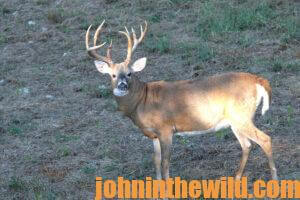 Remember that during the rut, the bucks are chasing does, expanding their territories and on the move trying to breed. They’ll often move as much at night as they do in the day. So, when the rut ends, and winter is coming on, their number-one need is food. This first buck I harvested on December 2 was in extremely-warm weather with a cold front moving in to where I was hunting.
Remember that during the rut, the bucks are chasing does, expanding their territories and on the move trying to breed. They’ll often move as much at night as they do in the day. So, when the rut ends, and winter is coming on, their number-one need is food. This first buck I harvested on December 2 was in extremely-warm weather with a cold front moving in to where I was hunting.
The first two tips for taking post-rut bucks are:
- look for cold fronts moving into the area where you hunt after the rut; and
- be sure food’s deer available for the deer after the rut.
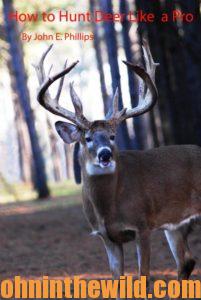 To learn more about hunting deer, check out John E. Phillips’ book, “How to Hunt Deer Like a Pro,” available in Kindle, print and Audible versions, at (http://amzn.to/YpoQHA). You may have to copy and paste this link into your browser. (When you click on this book, notice on the left where Amazon says you can read 10% of the book for free, and you can hear 10% for free). On the right side of the page and below the offer for a free Audible trial, you can click on Buy the Audible book. To see more of John’s deer-hunting books, visit www.amazon.com/author/johnephillips. John and Denise Phillips’ new book, “The Recipes You Can’t Live Without,” that’s full of delicious, time-tested recipes for cooking wild game and fish and also ideas for breakfasts at your hunting club just was published in print this this month. Go to https://www.amazon.com/dp/B09MYTMSMH?ref_=pe_3052080_397514860 to learn more.
To learn more about hunting deer, check out John E. Phillips’ book, “How to Hunt Deer Like a Pro,” available in Kindle, print and Audible versions, at (http://amzn.to/YpoQHA). You may have to copy and paste this link into your browser. (When you click on this book, notice on the left where Amazon says you can read 10% of the book for free, and you can hear 10% for free). On the right side of the page and below the offer for a free Audible trial, you can click on Buy the Audible book. To see more of John’s deer-hunting books, visit www.amazon.com/author/johnephillips. John and Denise Phillips’ new book, “The Recipes You Can’t Live Without,” that’s full of delicious, time-tested recipes for cooking wild game and fish and also ideas for breakfasts at your hunting club just was published in print this this month. Go to https://www.amazon.com/dp/B09MYTMSMH?ref_=pe_3052080_397514860 to learn more.
Tomorrow: Why Hunt Non-Pressured Postrut Deer


